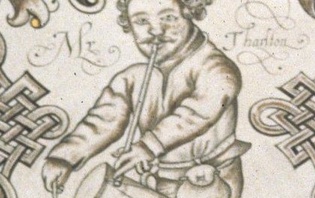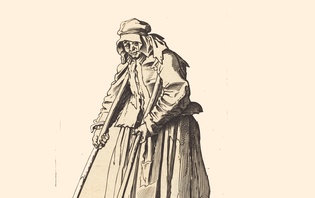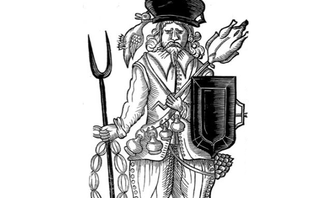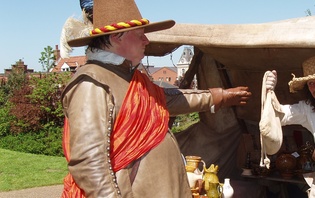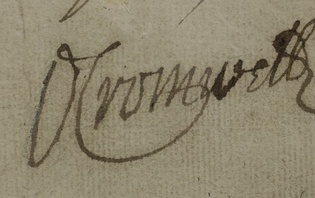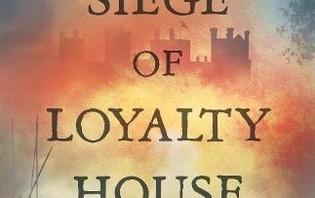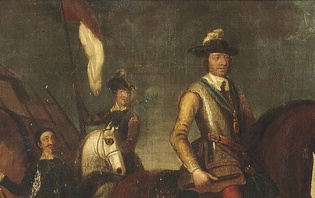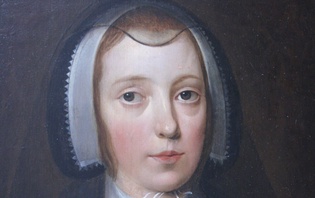‘This horrid kinde of cruelty’: narratives from the Irish theatre of the Wars
‘The English Civil Wars’, ‘the Great Rebellion’, ‘the English Revolution’, ‘the British Civil Wars’, ‘the Wars of the Three Kingdoms’. These are all names that have been used to refer to the various conflicts in what we now know as Great Britain and Ireland which occurred in the mid-seventeenth century. The last two terms were created to underline the key role that Ireland and Scotland played in these conflicts. But even the new terms remain contested – ‘British Civil Wars’, for example, creates a similar dispute to that of ‘British Isles’ being used as a shorthand for Great Britain and Ireland. Fortunately, however, the role of Ireland is nowadays rarely forgotten by the scholars of the Wars, even if historiographical debates continue. In this blog, Oresta Mukute, examines how narratives of loss from the Irish theatre of the Wars may be compared with those on Civil War Petitions…
It is difficult to see how the Civil Wars in England would have erupted had the Irish Rebellion of 1641 not occurred. Beginning as an attempt at a coup d’état by a few members of Irish Catholic gentry, the Irish Rebellion of 1641 developed into an ethnic conflict between the wider community of Catholic Gaelic Irish and ‘Old English’ on one side, and English, Welsh and Scottish Protestant settlers on the other. The Rebellion immediately precipitated a political crisis in Westminster, as the King and Parliament could not trust each other to control the army which was intended to quell the Irish rebels. It is arguable that had Charles accepted the list of grievances presented to him by Parliament a couple months after the rebellion broke out, the revolt in Ireland may have been settled with relative ease. Instead, however, Charles I mobilised an army of his own, thus officially starting the First Civil War in England.
The conflicts of the decade inflicted a huge death-toll on the population of Ireland, with estimates concluding that the loss of life at the time was more significant than that in the Irish Rebellion of 1798, or even the potato famine of the 1840s. In the midst of the tumult, the colonial administration was anxious to provide the Protestant refugees fleeing to Dublin with a framework for compensation and to find a way to acquire intelligence about the insurgents. The surviving collection of the depositions has been digitised and published on the 1641 Depositions website (http://1641.tcd.ie/). Similarly to the Civil Wars Petitions Project, it stores a great deal of very rich information on the events between 1641 and 1653. It contains a digitised collection of about 8,000 statements collected by the Commission for the Despoiled Subject, largely from refugees who fled to Dublin. Unfortunately, no equivalent for losses on the Catholic side exists.
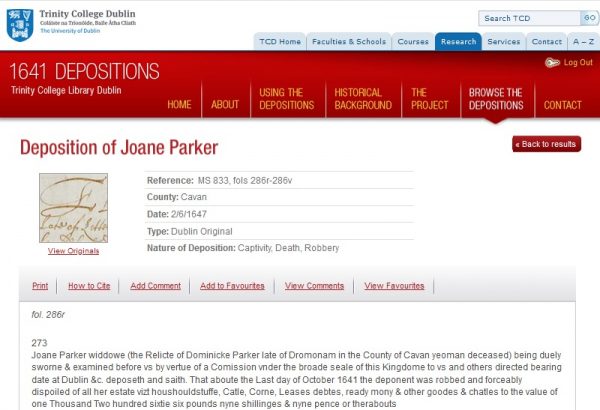
As with official documents from all time periods, the form and structure of the depositions were fairly standardised. Typically, after collecting the names, occupations and addresses of the deponents, the commissioners examined what robberies and spoils had been committed, under what circumstances, and to what value; any names of those known to be responsible; any memory of traitorous or disloyal words used by the rebels and any known instances of murder. The factual validity of the depositions has been questioned by historians ever since their collation, due to the 1641 Rebellion swiftly becoming the focus of religious and political propaganda. Nonetheless, these types of documents provide us with rare access to the voices of early modern people, even if these have been mediated by legal processes. They are important personal accounts which have a unique importance because they contain the most detailed information about what happened in Ireland during the decade of conflict. But they also convey the sense of the terror which the violence brought, which we know is also evident in English and Welsh accounts of the Wars.
Although women were the smaller group of deponents, Protestant authorities, such as the head of the Commission for the Despoiled Subject, Henry Jones, often chose to include women’s narratives in disproportionate numbers in their descriptions of the events in Ireland. This is likely due to the fact that many female narratives may have been perceived as more emotional and therefore more appropriate for sensationalist reporting. Undeniably, however, the contents of their depositions featured heavily also due to the fact that many of them included descriptions of violence on Protestant women and children. The obligation to protect certain categories of people was understood to be a part of the unwritten laws of nature and Christian morality. In aiming to portray the Catholic Irish rebels as barbarous or otherwise unruly, violence against women, especially the kind that mimics biblical stories, was very useful. ‘This horrid kinde of cruelty’, Sir John Temple wrote in The Irish Rebellion (1646), ‘was principally reserved by these inhumane Monsters for Women, whose sex they neither pitied nor spared’. Although the goal of this post is not to explore violence against women specifically, the special place of women in this conflict is the reason it will compare a female deposition to a similar petition that can be found on the Civil War Petitions website: the deposition of Joane Parker, of County Cavan and the petition of Marie Burton of Stansty, Denbighshire. These documents were chosen for their two key similarities: both narratives were recorded in the late 1640s, and both women were widowed after their husbands died in imprisonment. But there are equally differences to be acknowledged.
Firstly, the two documents served different functions. The depositions were originally created in Ireland to record the loss of goods and the activities and alleged crimes of the Irish insurgents. The petitions, meanwhile, were collected when soldiers, widows and orphans wished to claim help from the authorities due to the effects of the Wars on their families. And whereas most Protestant women deposing in Dublin would have witnessed the conflict in their communities, this would have been rarer among the females petitioning in England and Wales (although there are examples of women following army camps, living in garrison towns, or being combatants themselves). It is therefore clear that Joane’s and Marie’s narratives will express and emphasise different things.
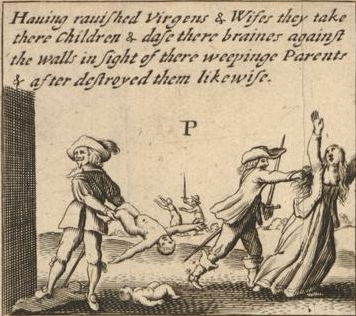
Lurid tales of alleged atrocities against Protestants in Ireland spread through England. This image is from ‘The Teares of Ireland’ (© The Trustees of the British Museum, reproduced under a CC BY-NC-SA 4.0 licence).
Joane’s experience of conflict, the way she recalls it, was very direct: some insurgent leaders ‘and a great number of their followers and people entered [her] dwelling house’, seized ‘some arms which the deponent’s said husband kept for the defence of himself and his family’ and carried away their animals and food. She then witnessed her husband being ‘carried by the rebels to Kilmore … as prisoner’, where he died. Joane’s deposition, however, somewhat unusually did not mention violence against her own body—many Irish depositions describe women being stripped of their clothes and being forced to flee their homes. Perhaps Joane did not experience this—if her husband’s imprisonment was the main goal of the rebels, they may not have been interested to humiliate his wife any more. Joane’s deposition claims that her losses added up to over £1200; a small fortune at the time. The wife of a rich yeoman, then, may not have been of interest as a target of further humiliation, as she was already ‘robbed and forcibly despoiled of all her estate’. However, these omissions can often have other causes too, such as the aforementioned fact that these actions were aimed to humiliate the victims.
Marie Burton’s experience of conflict, although similar, was expressed in a slightly different way. She stated that her ‘family and estate’ were exposed ‘to the merciless cruelties of the enemy’, but these cruelties were not elaborated on. Whilst this phrase could have described the burden of taxation or free quarter, it was possible that it referred to more violent activities. It is unclear whether Marie experiened them, or whether she simply wished to state her vulnerability after her husband, John, enlisted himself as a soldier and left her and her four small children to fend for themselves. Unlike Joane who was regarded a victim by simply living in Dublin as a refugee who lost many material goods as well as her husband, Marie had to justify this status. Not only did she have to convince the Justices of the Peace in the county of Denbigh that she was in a ‘distressed condition’, but also that her husband was a loyal soldier who promoted ‘the parliament’s service to the utmost of his ability’.
But is their experience that different after all? Although Joane, it is implied, witnessed the imprisonment of her husband personally, she, just like Marie—who received news of her husband’s ‘imprisonment, by the cruel and savage usage of the enemy’ and his consequent death—found out about it through someone else. Whether they received the bad news by letter, hearsay or via someone in the community, this aspect helps to level their stories. An interesting detail to note, however, is the fact that Marie’s petition initially said that her husband had been ‘slain’, and that this was crossed out and replaced with ‘dyed’. We cannot know whether Marie corrected this herself upon having the petition read back to her, or whether the scribe was the one who decided the latter word would be more appropriate. Either way, it suggests that whoever made this decision, acknowledged that the husband died in a more passive way as a prisoner, rather than being murdered instantly in a violent event.
Additionally, just because Marie did not describe violence perpetrated within her home, does not mean that she, or other women in Wales, did not experience such incidents. If we were to assume that she did not suffer directly at the hands of the enemy, it would not be mistaken to claim she may have witnessed other lone women in Denbighshire faced violence. Marie, therefore, could have used their experiences to justify and explain her own fears. Her petition was submitted during the Second Civil War, and had she not trusted the Justices to be aware of local conflict and violence, it seems unlikely that she would have brought it up as a part of her plea for assistance. Unlike those deposing in Dublin, she was not there to recall events that the authorities were not witnesses to, but rather to fashion herself as a widow in need of help.
Many women’s narratives in both the depositions and the petitions reflect not just their own stories, but also the stories of those around them. The aim of this comparison is not to suggest that Joane’s, Marie’s, or any other women’s sufferings were identical in the Wars of the Three Kingdoms. Rather, this small case study illustrates that there are ways to compare, quite directly, the experiences of certain women (and men) in the Wars, whether they struggled in a conflict at their doorstep, or one farther away. Not many accounts can be compared as fairly, and it is undoubtable that many people deposing in the 1641 Depositions recall atrocities that few (if any) English and Welsh accounts can match. Nonetheless, it shows that narratives of suffering and loss can and should be compared—the Wars of the Three Kingdoms, as historians now acknowledge, were unavoidably and inextricably linked. From this we can assume that there is much scope to begin investigating whether their suffering was linked in the same way.
Further Reading
The 1641 Depositions Project http://1641.tcd.ie/
Nicholas Canny, Making Ireland British, 1580-1650 (Oxford: Oxford University Press, 2001).
Imogen Peck, ‘The great unknown: the negotiation and narration of death by English war widows, 1647–1660’, Northern History, 53:2 (2016), pp. 220–35.
Oresta Muckute is a first year PhD student at the University of Leicester. She is working on comparing the narratives of loss in Ireland, England, and Wales in the mid-17 century.

